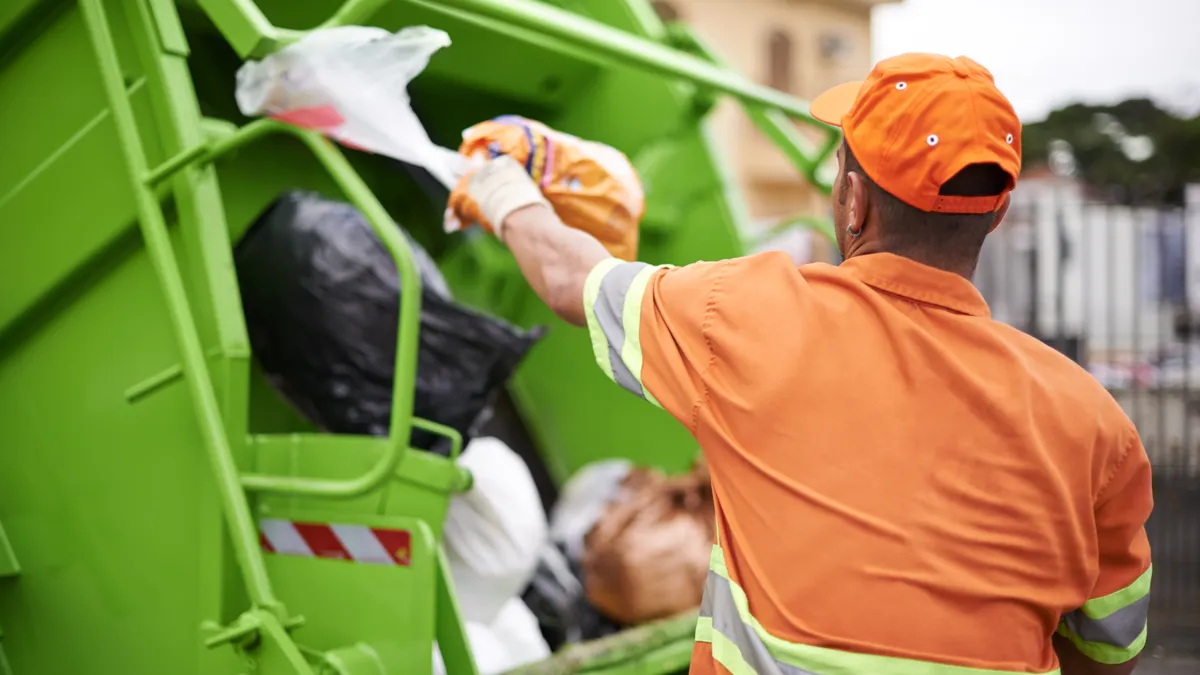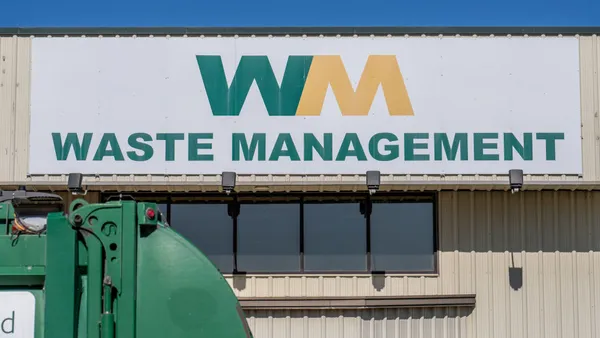This summer has already seen record-breaking temperature days in many parts of the U.S. and waste and recycling workers are among those at risk for heat stress and illness. During a June heat wave numerous haulers in different areas pushed up collection schedules in an attempt to spare teams from having to work in some of the hottest hours of the day.
For one of those companies, Ohio-based Rumpke Waste & Recycling, it’s considered an “administrative control” for local managers — just one tool in the overall arsenal of training and strategies used to keep workers safe amid the heat, said Jerry Peters, OSHA compliance manager with Rumpke.
The company doesn’t have a specific threshold temperature that triggers the decision to change schedules. Those calls are made district by district, or regionally, understanding that the actual heat index — how the human body experiences temperature when combining relative humidity with air temperature — might vary considerably in the Midwest versus the Southwest, he noted. Peters said managers are also encouraged to use the OSHA-NIOSH Heat Safety Tool to assess more industry and location-specific level risk forecasts.
At the federal level, that regional variance is part of what makes policymaking challenging. OSHA continues to work toward developing a workplace heat standard to ensure protections against heat-related injury and illness, a process announced last September.
“OSHA is trying to get as much information and trying to figure out how to do a standard that makes sense for the entire country ... April in Arizona is very different than April in Minnesota, so how do you do a standard that goes across?” said Kirk Sander, vice president of safety and standards at the National Waste & Recycling Association, who was selected last year to serve on an OSHA advisory committee’s Heat Injury and Illness Prevention Work Group. A pair of subcommittees are currently looking through current regulations and how to update them, and all of OSHA’s current publications, respectively.
Sander’s appointment was for 18-24 months, he said. But developing and finalizing an OSHA standard takes years, so its potential impact to the industry is still a long ways out.
To Peters, the OSHA standard won’t be the most consequential development for companies whose safety programs already meet or exceed the minimum level of protocols that OSHA is likely to put forth. For example, Peters said that OSHA may not go so far as requiring employers to stock workers with water, whereas Rumpke provides teams with coolers of drinks for the day. Similarly, Sander said some employers are now investing in feeding workers a small breakfast and providing a sack lunch so that they’re not working in the heat on a totally empty stomach, a practice that reportedly also helps retain temp workers.
Both Sander and Peters expressed growing emphasis on the important role dispatchers can play in communicating schedule or risk changes, and staying updated on how workers are doing in the field.
Ultimately, when working with “industrial athletes,” Peters said Rumpke believes that company planning in early spring and employee training remains the most effective tool for heat safety. The key elements of that include educating employees on the signs of heat illness, acclimatization, hydration, what to do if an employee is having an incident, and how workers should communicate how they’re feeling.











